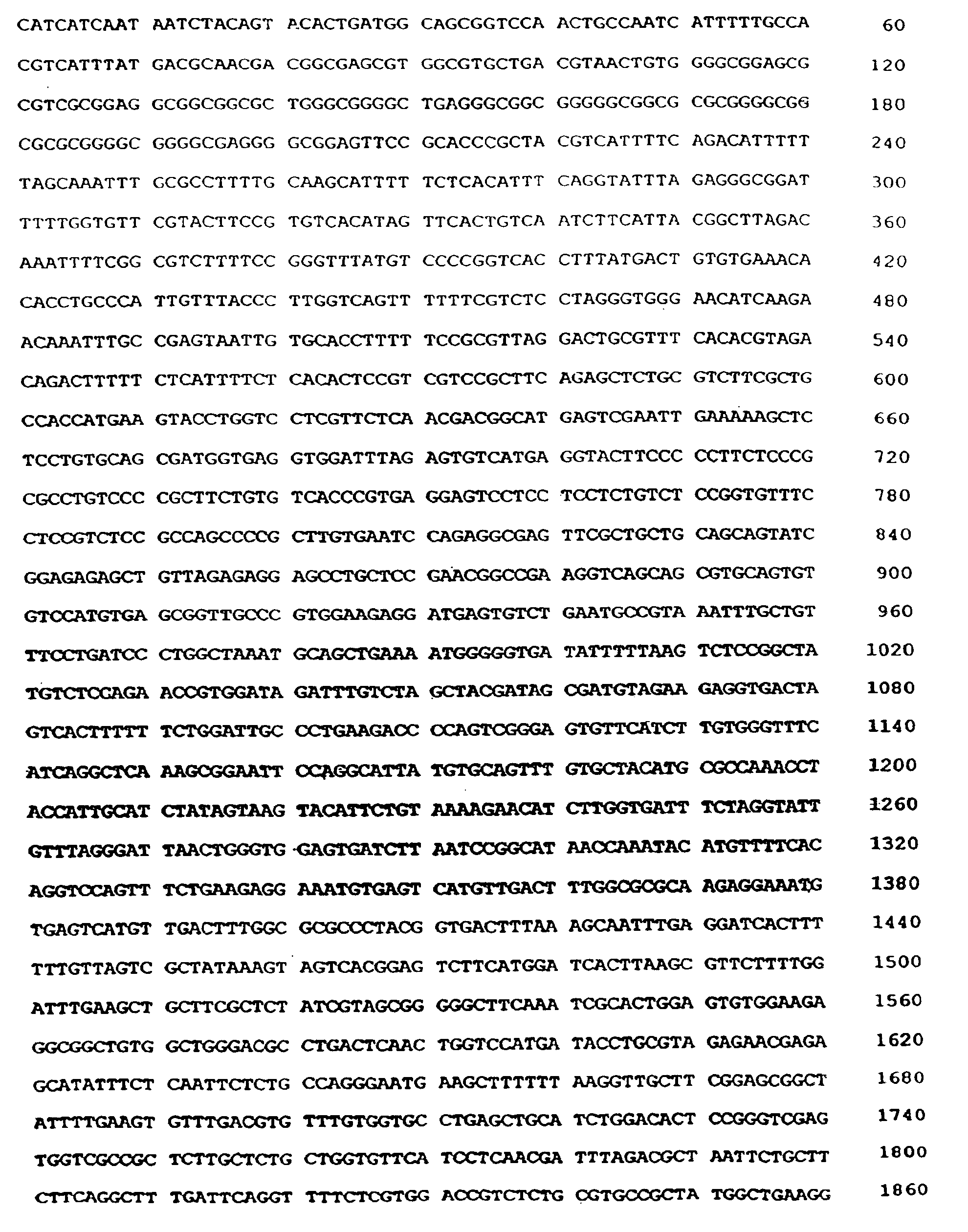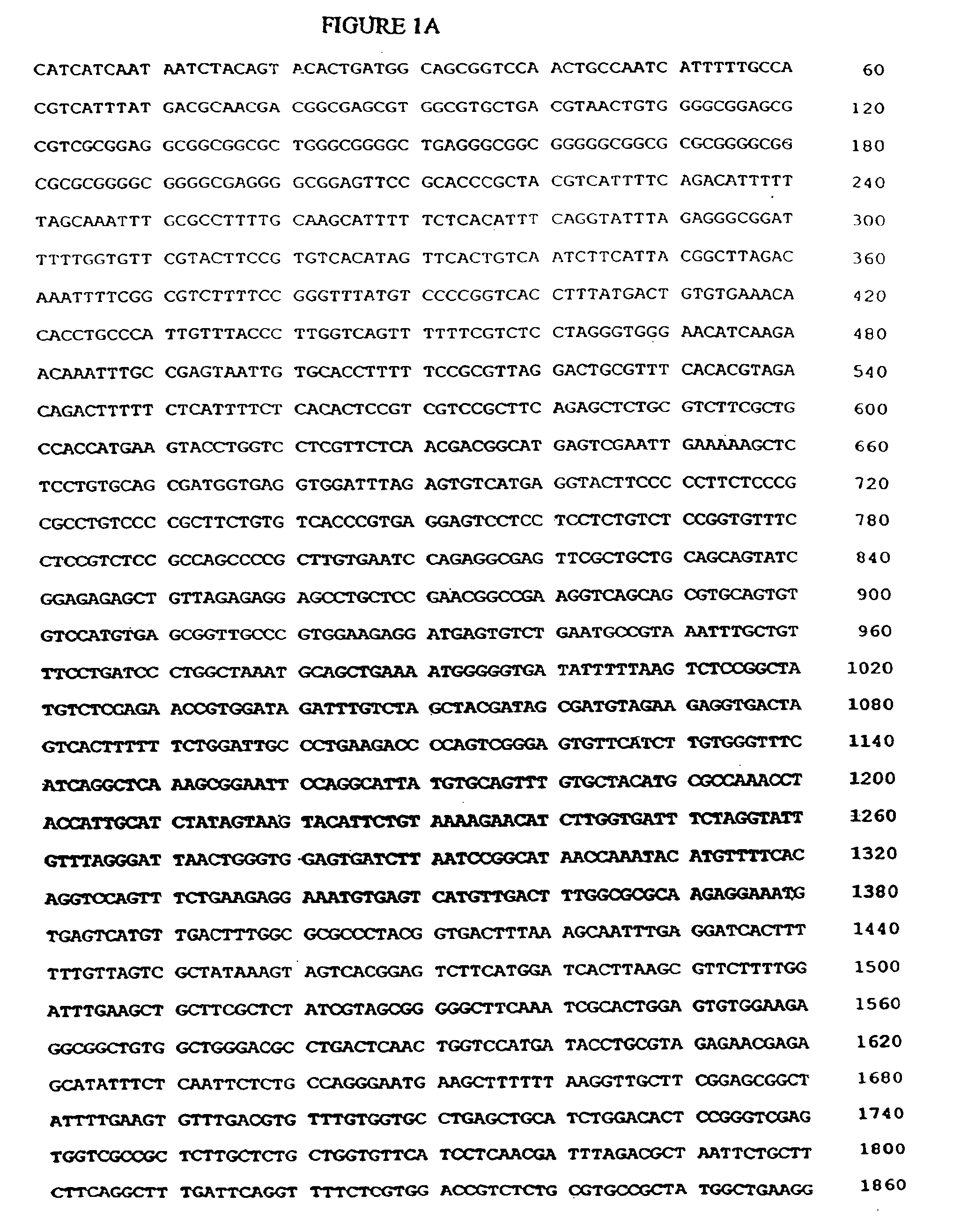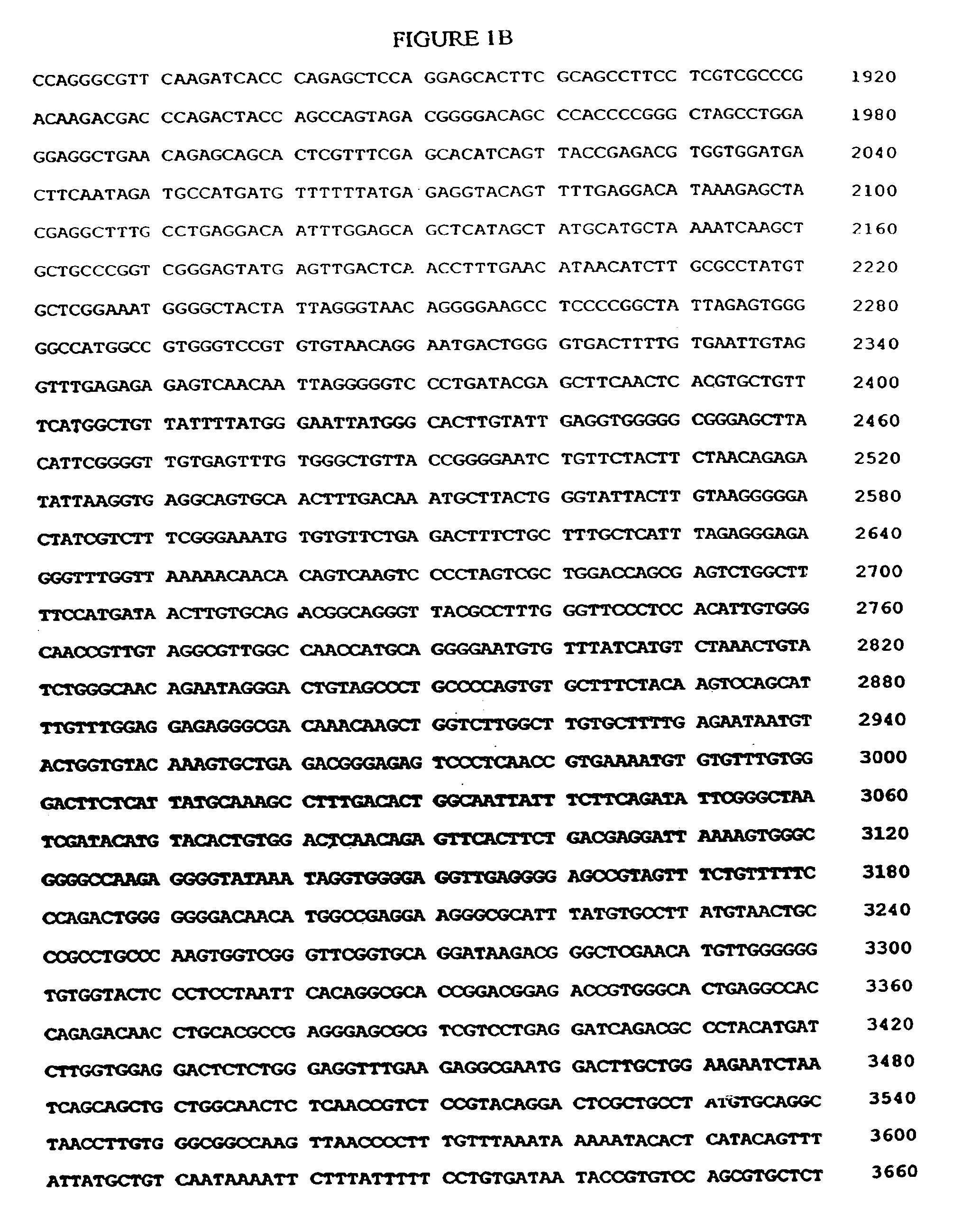Modified bovine adenovirus having altered tropism
a technology of bovine adenovirus and tropism, which is applied in the field of modified bovine adenovirus, can solve the problems of inhibiting cellular protein synthesis, and achieve the effect of inhibiting the activity of a protein
- Summary
- Abstract
- Description
- Claims
- Application Information
AI Technical Summary
Benefits of technology
Problems solved by technology
Method used
Image
Examples
example 1
Construction of BAV600 Containing a Human Fiber Gene
[0155]To generate an BAV-3 vector with an altered tropism, the chimeric fiber gene construct containing the HAV-5 fiber knob fused to the BAV-3 tail and shaft was incorporated into the BAV-3 genome of BAV304, described in Reddy et al., supra 1999 (FIG. 3). For the precise replacement of the wild-type BAV-3 fiber gene, a previously made plasmid pBAV301.gfp (Reddy et al., 1999) was used for modification of BAV-3 fiber. The resulting transfer vector pBAV-301.G5FK contained a CMV promoter driven green fluorescent protein (GFP) expression cassette inserted into the E3 region, the chimeric BAV-3 / HAV-5 fiber gene, and E4. This transfer vector was used for incorporation of GFP cassette and modified fiber gene into the backbone of an E3 deleted BAV-3 infectious plasmid, p.FBAV302 (Zakhartchouk et al., 1998), via homologous recombination in E. coli BJ5183 (Chartier et al., 1996), creating plasmid pFBAV-600. The viral genome was released from...
example 2
Characterization of BAV600
[0156]BAV600 obtained from the transfection of fetal bovine retinal cells expressing E1 protein, ATCC accession number PTA156, was amplified in MDBK cells, and the viral DNA was extracted from infected cells. The DNA was analyzed after digestion with restriction enzyme Bg / II and agarose gel electrophoresis (FIG. 5A). As shown in FIGS. 5A-5B, both the parental BAV302 and BAV304 had Bg / II fragment of 5.4 kb at the right end of viral genome. The HAV-5 fiber knob region introduces an additional Bg / II restriction enzyme site within the BAV600 genome. Therefore, diagnostic 1.5 and 3.9 kb fragments were found after Bg / II digestion. Southern blot analysis with the HAV-5 fiber knob probe demonstrated the expected hybridization pattern for Bg / II-digested BAV600 (FIG. 5B).
[0157]Expression and assembly of the chimeric BAV-3 and HAV-5 fiber protein by recombinant BAV600 were examined by immunoprecipitation assay. Metabolically radiolabeled immunoprecipitates from the pa...
example 3
Transduction of Human Cell Lines by BAV600
[0159]To characterize the transduction efficiency of BAV304 and BAV600 in different human cell lines, FACS analysis was performed to determine the percentage of transduction of each cell line at different virus input (FIG. 7A). Cells grown in T25 flasks were infected at an MOI of 1 and 5 with either BAV304 or BAV600. Forty-eight hours after infection, the percentage of GFP-fluorescence positive cells were determined by flow cytometry. The percentage of transduction of each cell line was quantitated, and the fraction of dose is shown in FIG. 7B. 293 cells were equally susceptible to transduction with both viruses (indicating that both the HAV-5 and BAV-3 receptors are present on the cell surface.) The transduction of HeLa and HEp-2 cells with BAV304 is dose dependent, with about 6% and 1% respectively at an MOI of 1 and about 25% and 5% respectively at an MOI of 5. Both cells were efficiently transduced with BAV600. The percentage of transduc...
PUM
| Property | Measurement | Unit |
|---|---|---|
| diameter | aaaaa | aaaaa |
| w/w | aaaaa | aaaaa |
| volume | aaaaa | aaaaa |
Abstract
Description
Claims
Application Information
 Login to View More
Login to View More - R&D
- Intellectual Property
- Life Sciences
- Materials
- Tech Scout
- Unparalleled Data Quality
- Higher Quality Content
- 60% Fewer Hallucinations
Browse by: Latest US Patents, China's latest patents, Technical Efficacy Thesaurus, Application Domain, Technology Topic, Popular Technical Reports.
© 2025 PatSnap. All rights reserved.Legal|Privacy policy|Modern Slavery Act Transparency Statement|Sitemap|About US| Contact US: help@patsnap.com



